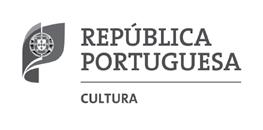
6 SET 25 — 11 JAN 26


6 SET 25 — 11 JAN 26

Um linearrayé, por definição, um dispositivo de difusão de som concebido para responder às exigências das grandes salas de espetáculo: colunas de altifalantes suspensas em linha vertical, capazes de projetar voz e música com potência, nitidez e homogeneidade sobre vastas plateias. É uma tecnologia que procura a eficiência associada à escala, com a promessa de uma perfeição acústica.
João Pimenta Gomes apropria-se deste objeto industrial para o deslocar radicalmente do seu contexto. Transporta a coluna monumental para o espaço intimista da Cisterna. As colunas transformam-se em esculturas – desajustadas e desproporcionadas. E nesse gesto quase absurdo abra-se o intervalo da fragilidade, da experiência e da potência.
Um artista de som procura a pureza do som, trabalha-o de forma quase obsessiva resguardado pela proteção hermética dos estúdios. Quando este som se cruza com salas que não estão preparadas para o receber, contamina-se com a sujidade, as interferências invisíveis e as imperfeições técnicas das paredes, dos próprios cabos. Tudo o que a engenharia acústica tenta ocultar, aqui torna aqui visível e audível. É neste confronto onde habitam as obras de João Pimenta Gomes, uma atitude quase punk e de desconstrução das premissas da criação musical. A obra vive nesse confronto com as ‘impurezas” que o sistema inevitavelmente produz, ela aceita e incorpora os constrangimentos real — técnicos, económicos, materiais.
As composições que estas colunas reproduzem têm origem em gravações de vozes humanas no Mellotron, o primeiro sampler analógico da história da música e um dos instrumentos que Pimenta Gomes tem vindo a explorar. Cada nota, inscrita numa fita magnética de oito segundos, é reativada, manipulada e reconfigurada em estúdio. O sistema reprodutor impõe também a sua agência: corta frequências, limita gamas, altera timbres. A peça nunca é estática, nunca é estável; o dispositivo despurifica a composição e mantém-na em estado de permanente variação.
Este modo de trabalhar aproxima-se da lógica do arquivo e da fotografia: sons guardados, revisitados, selecionados, combinados no momento da exposição. O atelier é, para o artista, um espaço doméstico onde compõe e acumula; só na instalação expositiva se dá o encontro entre material e obra, revelando
sempre algo inesperado. A fotografia que acompanha a instalação não ilustra nem explica a escultura sonora, ao invés disso acrescenta camadas, desvia leituras, quase como uma capa de disco — simultaneamente reveladora e opaca.
LineArrayé, assim, um trabalho sobre a potência e a sua impossibilidade, sobre a pureza prometida e a contaminação inevitável, sobre o ruído como condição vital. Na interseção entre concerto e instalação, entre arquivo sonoro e escultura, entre promessa industrial e precariedade artesanal, o artista propõe uma experiência que nos devolve o som naquilo que ele tem de mais essencial: a sua vulnerabilidade e a sua instabilidade.

6 SEPT 25 — 11 JAN 26

A line array is, by definition, a sound diffusion device designed to meet the demands of large concert halls: loudspeaker columns suspended in a vertical line, capable of projecting voice and music with power, clarity and homogeneity over large audiences. It is a technology that seeks efficiency associated with scale, with the promise of acoustic perfection.
João Pimenta Gomes appropriates this industrial object to radically shift it from its context. He transports the monumental column to the intimate space of the Cisterna. The columns are transformed into sculptures – mismatched and disproportionate. And in this almost absurd gesture, the interval of fragility, experience and power opens up.
A sound artist seeks the purity of sound, working on it almost obsessively, sheltered by the hermetic protection of studios. When this sound encounters rooms that are not prepared to receive it – as the Cistern -, it becomes contaminated with dirt, invisible interference and the technical imperfections of the walls and the cables. Everything that acoustic engineering tries to hide becomes visible and audible here. It is in this confrontation that the works of João Pimenta Gomes reside, with an almost punk attitude and attempting a deconstruction of the premises of musical creation. The work lives in this confrontation with the “impurities” that the system inevitably produces, accepting and incorporating real constraints — technical, economic, material.
The compositions that these columns present originate from recordings of human voices on the Mellotron, the first analogue sampler in the history of music and one of the instruments that Pimenta Gomes has been exploring. Each note, recorded on an eight-second magnetic tape, is reactivated, manipulated and reconfigured in the studio. The playback system also imposes its own agency: it cuts frequencies, limits ranges and alters timbres. The piece is never static, never stable; the device depurifies the composition and keeps it in a state of permanent variation.
This way of working is close to the logic of the archive and photography: sounds stored, revisited, selected, combined at the moment of exhibition. For the artist, the studio is a domestic space where he composes and accumulates; it is only in the exhibition installation that the encounter between material and
work takes place, always revealing something unexpected. The photograph accompanying the installation neither illustrates nor explains the sound sculpture; instead, it adds layers, diverts readings, almost like an album cover — simultaneously revealing and opaque.
LineArrayis thus a work about power and its impossibility, about promised purity and inevitable contamination, about noise as a vital condition. At the intersection between concert and installation, between sound archive and sculpture, between industrial promise and artisanal precariousness, the artist proposes an experience that returns sound to us in its most essential form: its vulnerability and its instability.